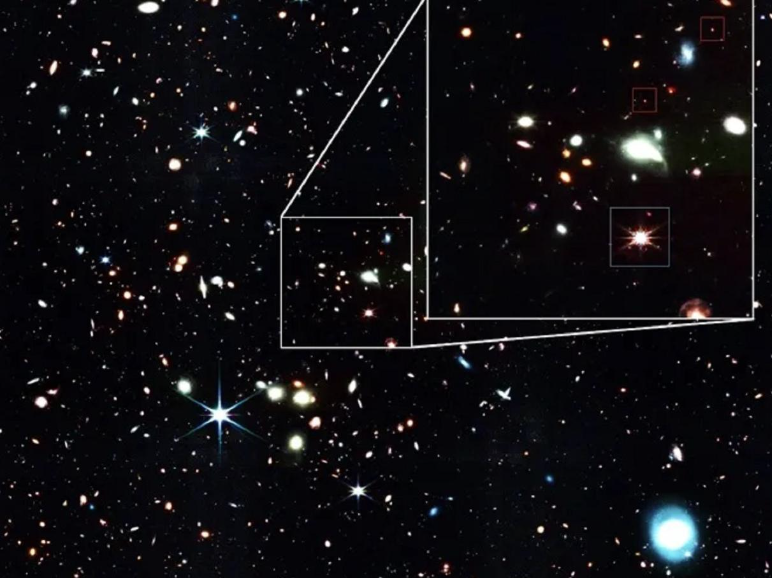Scientists say the red dots in the sky are very small black holes.
According to the researchers who found them, the blobs in the distant universe could change our understanding of how supermassive black holes form and explain mysteries in the process.
Scientists have seen the tiny red dots before through the Hubble Space Telescope. But they looked like normal galaxies.
Now NASA’s James Webb Space Telescope (JWST) has revealed their true identities. Scientists say they are baby versions of very massive black holes.
“JWST, which was not developed for this specific purpose, has allowed us to determine that tiny red faint dots far away in the distant past of the universe are tiny versions of extremely massive black holes,” said Jorryt Matthee of the Austrian Institute of Science and Technology. These special objects could change the way we think about the birth of black holes.”
The current findings could bring us one step closer to answering one of the biggest dilemmas in astronomy: According to current models, some supermassive black holes in the early universe grew simply “too fast”. So how did they form?
After remaining mysterious enough for some to doubt their existence, it has become increasingly clear that supermassive black holes are spread throughout the universe. There is thought to be one at the center of almost every major galaxy, including our own, and their mass can reach billions of times the mass of the Sun.
But some are far more active than our largely dormant giant black hole. They consume enormous amounts of matter and become so bright that we can see them at the edge of the universe. These are known as quasars and are among the brightest objects in the cosmos.
Some of these quasars seem too massive to exist, given the age at which they are seen. Scientists call these objects “problematic” because they appear to have grown faster than thought possible.
These newly discovered objects could help explain this problem. According to scientists, these objects appear to be “baby quasars” with smaller masses and different colors than the problematic ones.
Troubled quasars are blue, extremely bright and can be billions of times as massive as our Sun, while red dots can be only as big as 10 Suns and appear red because of the dust around them. But researchers will now be able to track how these quasars become troubled, blue and bright quasars.
“Studying infant versions of extremely massive supermassive black holes in more detail will allow us to better understand how problematic quasars arise,” Matthee said.
The findings were published in The Astrophysical Journal in the article “Little Red Dots: An Abundant Population of Faint Active Galactic Nuclei (AGN) at z ~ 5 Revealed by the EIGER and FRESCO JWST Surveys” (Little Red Dots: EIGER and FRESCO JWST Surveys Reveal an Abundant Population of Faint Active Galactic Nuclei (AGN) at z ~ 5″), reported in the new paper.





